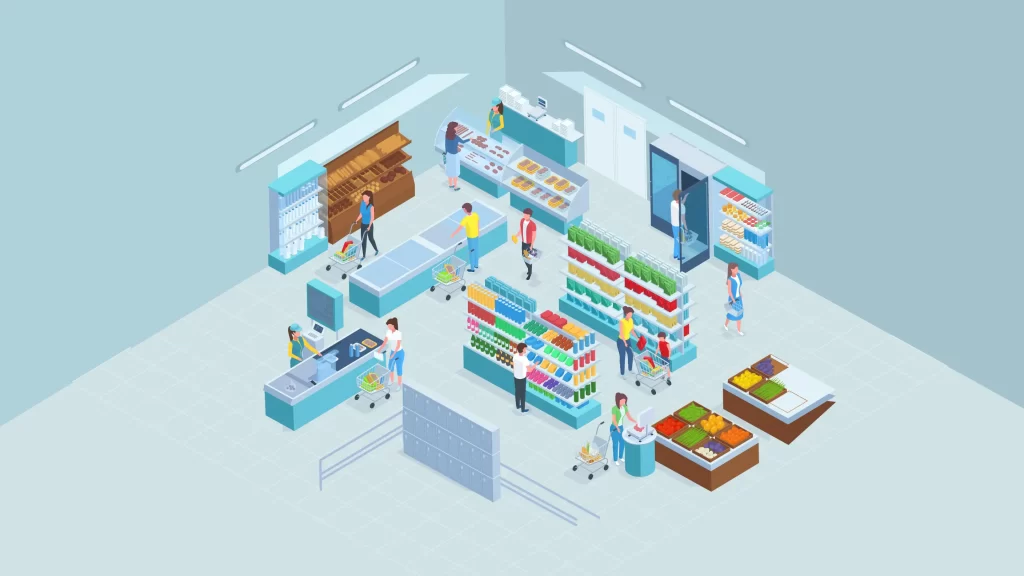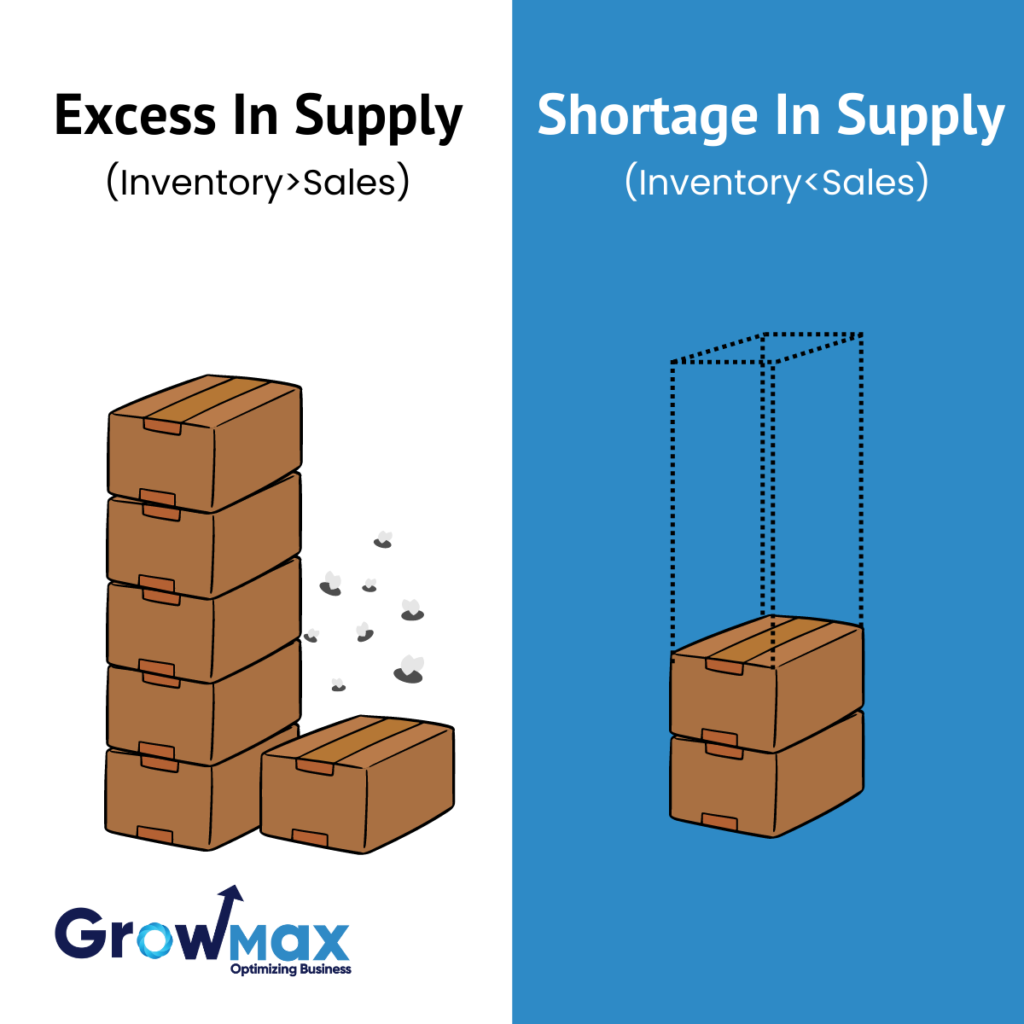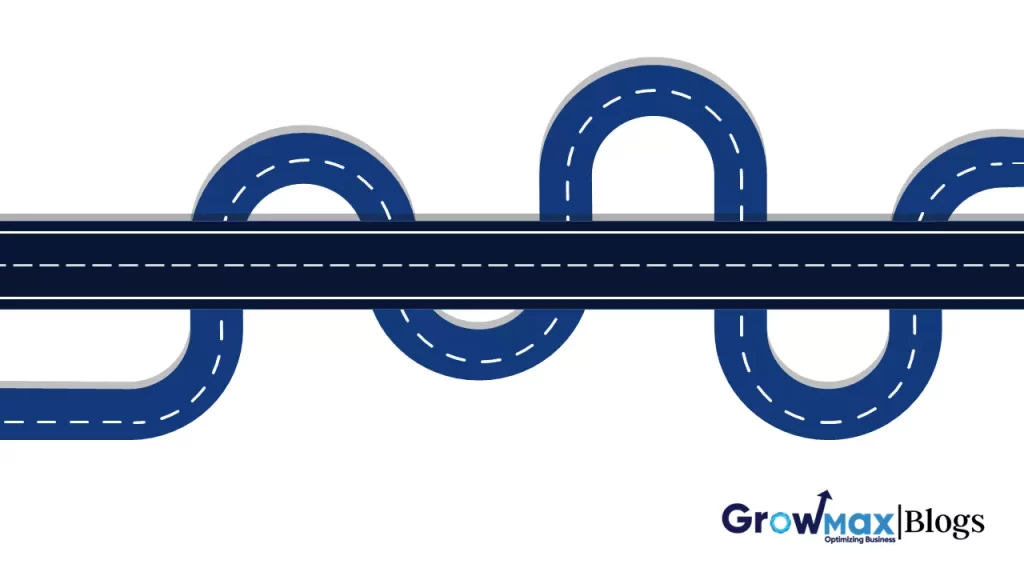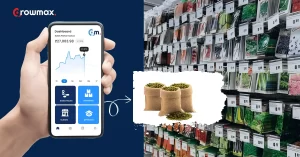Digital Transformation in retail today is what computers were in the factories of the 1960s: A key to the future, but blurry.
Introduction: What is it all about?
Businesses have evolved since the 1960s. Paper files became excel sheets, physical mails became emails, and traditional selling became online.
These transitions didn’t emerge by any accident. They were forced by a natural selection process — a tech evolution that transformed businesses globally.
Ones who didn’t go with this tech-wind — perished. And the ones who did — survived.
Digital Transformation is the next step in this evolution: A key to new capabilities, opportunities, and data that isn’t available anywhere.
This guide aims to give you a concrete understanding of this step and guide you toward the future of retail. Download this guide in a PDF and keep it as a reference in your new curiosity dive.
Uncovering the Truth: What is Digital Transformation, really?
It’s a confluence of Business and Technology. It is when a brand decides to use technology to monitor its activities, gain insights, and optimize itself for the market.
In Digital transformation, a brand transforms itself with data-driven tools for visibility, control and insights. Generally, the insights fall into three broad categories:
- Market Insights
- Operational Insights
- Marketing Campaign Insights
Digital tools give you a new set of eyes and opportunities to outrun your competitors.
They open up new doors for possibilities like demand-driven segmentation, market-responsive behaviors, and consumer-centric supply chains.
Zooming In: What is Digital Transformation in Retail?

Long story short, Digital Transformation in retail involves four key components:
- Retail Intelligence
- Salesforce Automation
- Distribution Management Systems
- Channel Automation
(We will dive into each component in the next section)
They help you navigate customer retention, know buyer preferences, and offer them what they crave. By combining location-based analytics, 360-degree view, and mobile apps, they reimagine your value delivery.
Splitting the Pieces: What Drives Digital Transformation in Retail?

1. Retail Intelligence
Retail Intelligence is a common word for Business Intelligence Systems used in retail. It is one of the handiest and most widely used digital tools that almost every industry uses.
The system collects, centralizes, and processes real-time data to derive insights. The collected data are also fed to predictive models to generate sales forecasts and trends.
Retail Intelligence is a critical tool for FMCG and CPG companies. Considering the rapid movement of their goods and the dynamic nature of their supply chain, they need it to prevent their products from spoiling.
2. Sales Force Automation
Sales Force Automation (SFA) is a solution that streamlines the field sales process. It helps you manage your field teams and their activities.
The Beat Planning System (a feature of SFA) determines the most efficient route plans for the team.
Furthermore, it allows your managers to assign duties, take attendance, and locate teams via mobile apps.
SFA automates the following tasks:
- Appointment scheduling
- Beat Planning
- Order Management
- Leave Management
- Inventory Confirmation
- Data centralization and analysis
- Lead Management
- Real-time team evaluation
3. Distribution Management Systems
A Distribution Management System integrates and streamlines all distribution activities under a single roof of technology.
On the sales side, it automates:
- Order-taking
- Order-management
- Invoicing
- Collection
- Other related activities
On the inventory side, It takes care of:
- Warehousing
- Fulfillment
- Replenishments
- Inventory Analytics
Solution providers often break down these functions to make them customized and handy. They divide it into Inventory Management Systems and Order Management Systems.
A DMS makes the process traceable, in control, and efficient. It allows you to control your distribution from one interactive dashboard.
Scoping the Horizon: Impacts of Digital Transformation In Retail

Digital Transformation impacts a business in many different ways. Some are visible in front; some are realized only internally.
Here are some significant impacts of digital Transformation in retail:
Front End Impacts
1. Customer Experience
Customers today are extremely informed. According to Deloitte, 70% of Indian shoppers use digital devices before embarking on their purchase journey. They demand convenient shopping experiences.
Things like real-time availability data and personalized communications motivate them to choose one brand over another. Providing such interconnected experiences requires digital enablement.
Brands such as IKEA, using AR, allow people to evaluate their products before even setting foot in their store using AR technology.
2. Retail Execution and Promotion
Effective promotions and retail execution have been the cornerstone of retail success for many decades. Digital tools make it even more effective. They help brands in:
- Monitoring their retail execution
- Ensuring premium shelf spots
- Managing and optimizing the trade promotion schemes.
Digitally Enabled brands can do these right from their dashboards. They can even opt for omnichannel strategy (selling everywhere) to further engage with their customers.
3. Loyalty programs
People are more likely to trust recommendations from friends and family than celebrities.
According to Nielsen, customers are 4 times more likely to buy from a brand if they are referred by a peer.
Enabled brands use tools like CRMs to identify individual customers and nurture them for loyalty and advocacy.
They engage them with chatbots, gamification, and social badging. They offer discounts to incentivize loyalty and check their progress meanwhile.
All of these weren’t possible a couple of decades ago. It is now possible with marketing and sales digitization.
Back End Impacts
1. Supply Chain Transformation
The retail supply chain is one of the toughest in the world. With near-zero visibility, it is extremely hard to control and optimize.
A big cause of this problem is the unorganized data flow.
In most cases, the market data is normally an unorganized heap of spreadsheets that are neither quick nor comprehensible.
Digitally enabled brands do not depend on such spreadsheets or the market hierarchy. They use their digital distribution channels to capture, store and process market data in real-time.
2. Streamlined Warehouses and Distribution
A retailer of the 21st century must innovate at three fundamental levels: location, speed, and cost. Each can be addressed with digital warehouses and automated distribution channels.
- Location with decentralized warehousing
- Speed with real-time inventory
- Cost with optimized distribution.
Digitized warehousing allows you even to go for omnichannel sales. With it, all the channels can be seamlessly fed with a digitally regulated inventory.
3. Inventory and Order Management
Distribution Management tools regulate the inventory as per the market demand. They collect order data from outlets and use it to determine territory-based sales.
Parallelly, they record the outlet fulfillment data and sales trends to prescribe near-perfect inventory replenishments. They notify the distributors to replenish outlets before they run out of products.
Following the evolution: Why is it necessary in retail?

Three big reasons.
Digital Transformation helps you sell more. It helps you sell more than your competitor. It helps you sell with transparency and control.
But if you wish to dig deeper, here are 4 more reasons why Digital Transformation is necessary for retail:
1. Buyer Insights
Delightful customer experiences are the surest way to succeed in retail. To achieve that, your brand needs to know the preference of your customers.
You need insights like:
- What products do buyers love?
- Where do they buy them?
- What are their preferred channels for communication?
- What are their preferred channels for sales?
- Which Trade promotions work on them and which don’t?
Gaining such Insights is possible only when a brand captures its customer interactions and learns from them. It is possible with Digital Transformation.
2. Perfect Inventory
FMCG and CPG brands often struggle to deal with the two-way inventory problem.
If the inventory exceeds the sales, products expire and go to waste. If the inventory falls short, it creates out-of-stock situations.
Supply chain automation helps them optimize their inventory for demand-driven allocation and minimum inventory wastage.

3. Seamless Customer Experiences
Today, buyers buy products online, in malls, through WhatsApp bots, and over the phone. Their presence is more diverse than ever. In such diversity, they crave connected experiences.
Digitally enabled brands can offer these connected experiences by engaging with customers at every possible touchpoint. Some famous strategies for this are:
- BOPIS: Buy online and pick at the store
- AR virtual trials
- Smart store locator
4. Enhanced Marketing Campaigns
Crafting effective campaigns is way easier with marketing insights. They help you track the geo-based impacts of your campaigns and optimize them for effectiveness.
They can answer questions that cannot be answered elsewhere.
“How did the banner ad campaign impact sales in the XYZ area? Here’s the data!”
“The sales in March spiked. Why is that? It is because we ran a trade promotion campaign in March.”
You get the idea!
*This upcoming section will discuss the process and challenges of digital transformation. It is especially for brands that wish to transform themselves in the future.
Facing the Roadblocks: Challenges on the Way

Transforming a retail brand is a tiring task. It requires insights, speculative thinking, and a keen eye for detail.
To keep the process smooth, you must make an effort to streamline the process by addressing the challenges in the way.
Check out this detailed blog on digital transformation challenges to know these challenges in detail. The top 5 challenges (out of ten) are:
1. Unclear Vision for Value
Brands often do not know how digital transformation will affect their value creation and delivery process. This lack of vision impacts their ability to get started and maintain transformation momentum.
They are often unclear about:
- What will be the main areas of optimization?
- How will they use the new tools to enhance value creation?
- How will they use digital Transformation to outrun the competition?
2. Stakeholders and Employee Resistance
Humans resist change. It is our nature.
Employees and stakeholders are no different. They also resist new methods and technologies at the beginning. Their resistance can manifest in various levels and forms.
It can be a direct opposition in the case of stakeholders. Or something as subtle as a productivity drop in the case of employees. Therefore, you must educate both of them on the benefits of Digital Transformation.
3. Lack of a Clear Roadmap
Brands mostly get stuck because they lack a clear roadmap. Lack of a proper roadmap can cut your access to proper directions, plans, and adequate decision-making clarity.
A well-built roadmap that defines each step from beginning to end can save you time, expense and confusion.
Check out this roadmap for successful digital Transformation.
4. Cost of Initial Upfront Investments
Startups and SMBs don’t usually have the deep pockets as their giant counterparts. Their budgets are tight, and the cost of developing new tools is usually impossible.
To solve this problem, platforms like GrowmaxBI provide such tools to SMBs with pay-as-you-grow payment options.
5. ROI Assessment
Assessing the return on investment (ROI) of digital Transformation is extremely hard. It requires consultants or experts to accurately measure the impact of digital tools on a brand.
In such cases, the brand must seek help from a consultant or other experts. Service providers like GromaxBI assist companies with such complications with consulting and suggestions.
Hammering The Nail: Roadmap for Digital Transformation

Since every brand is different, every Digital Transformation roadmap is also different. One size can never fit all.
However, a few fundamental steps form the basis of Digital Transformation. They remain the same (roughly) for every company or industry.
The roadmap below is taken from one of my articles on the digital transformation roadmap in manufacturing. However, the steps suggested are equally true for retail brands.
1. Build Commitment for Digital Transformation
The top-level management can greatly affect the transformation of a brand. They can cease the project, slow it down, or worse, jumble everything up.
Therefore, while planning, make sure that all the key decision makers are committed to Digital Transformation. They must support it and be motivated.
2. Examine Your Requirements
Not every company needs everything. A necessity for one brand may be a novelty for the other. And spending fortunes on novelties is never a good strategy.
A company must thoroughly enquire its exact needs from digital solutions. Which areas need improvement? Which is performing well? Figure them out before investing in Transformation.
This is why GrowmaxBI offers customized plans for every brand as per their needs.
3. Define goals and strategy
Once the requirements are known, your team must be clear about how its value creation will change after digital Transformation.
It must set clear goals and make an effective strategy to achieve them.
4. Create Financial Boundaries
To ensure that you are choosing the feasible options:
- Evaluate the solution costs.
- Define the financial boundaries.
- Make a Budget
- Use ROI to select or reject potential ideas.
When completed, present the budget and secure a sufficient investment.
5. Choose the Right Partners
Digital Transformation requires experience-based expertise. Such expertise cannot be found in normal retail employees. They have never been in a retail transformation, and such projects are not in their job profile.
It is, therefore, important to choose the right partners for proper guidance and implementation support.
For that, firms can seek help from consulting firms like Elysian Corptech.
6. Build an Outstanding team
One of the key needs of a digitized company is a team of tech-skilled employees. A strong IT team is the driving force of a digitization project. A brand, therefore, must build such a team.
There are two ways to have a high-caliber support team:
- Hire an In-office team
- Use a Virtual Sales Force

*COCA herein stands for Cost Of Customer Acquisition
7. Nurture a Digital Culture
Employees must feel comfortable with new tech. To achieve this, the management must focus from the start on cultivating a digital culture.
Since resistance is inevitable, it should prepare for it in advance. It must encourage the distributors, field team, and employees to use the new tech. It must strive towards familiarizing them with tools and stats.
8. Transition to a new operating model
Switching to the new operating model is the final milestone in our roadmap. This is the point of no return.
Here, your management must focus on effective change management and encourage distribution agents to use new tech.
You may face many challenges up till this step. The IT team may fall behind schedule. The management may struggle with change management. Or the decision-makers may begin to resist.
There are no rule books to avoid these challenges. All that a firm has to do is put one foot in front of the other and learn in the process.
Wrapping Up: Conclusion
Digital Transformation is a tiring but rewarding process. It pushes a brand toward some major technological and operational changes. However, these changes can open up new doors for your brand. They equip the brand with insights, optimization and expansion opportunities.
Digital Enablement is the future of retailing, and brands must go through it to outrun their competitors.
This article aimed to give you a complete picture of Digital Transformation. I hope I’ve been able to do so.
Check out the other blogs related to Digital Transformation in Retail. Click here to download this guide as a PDF.




